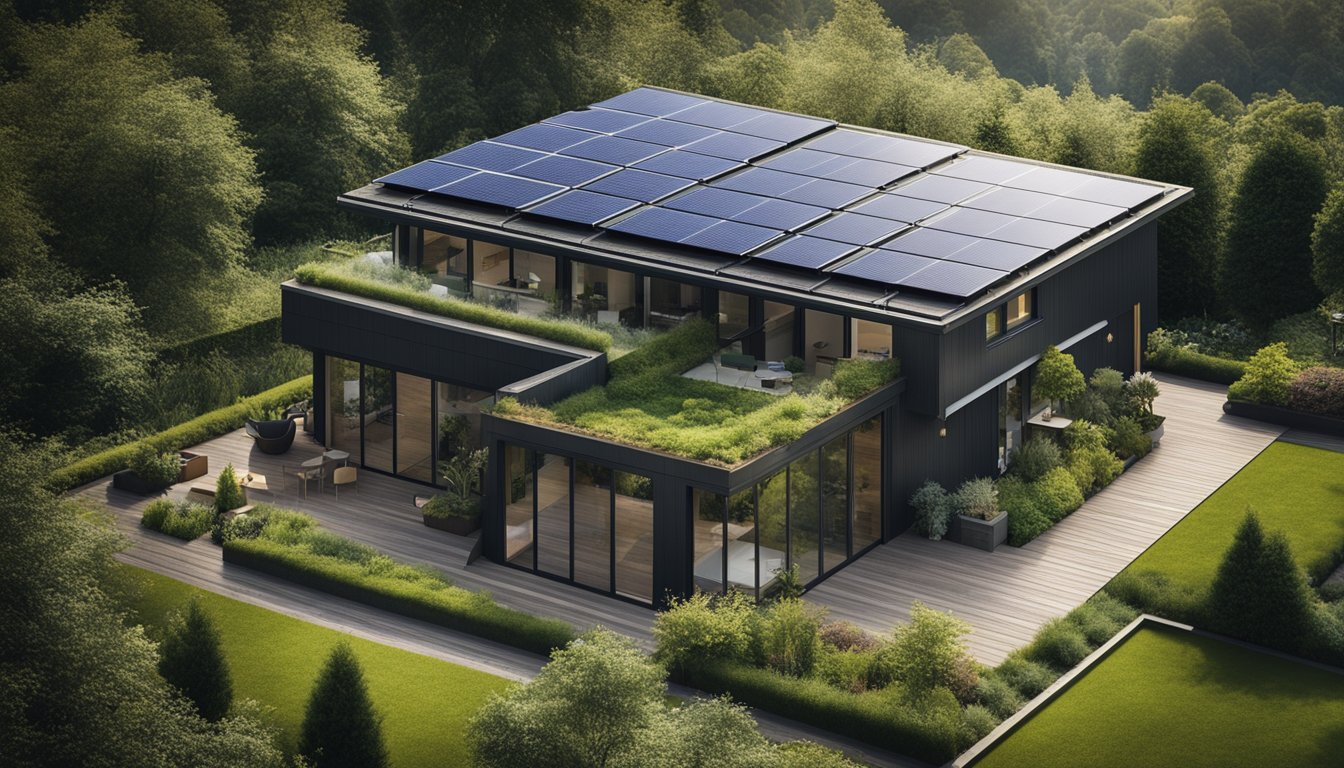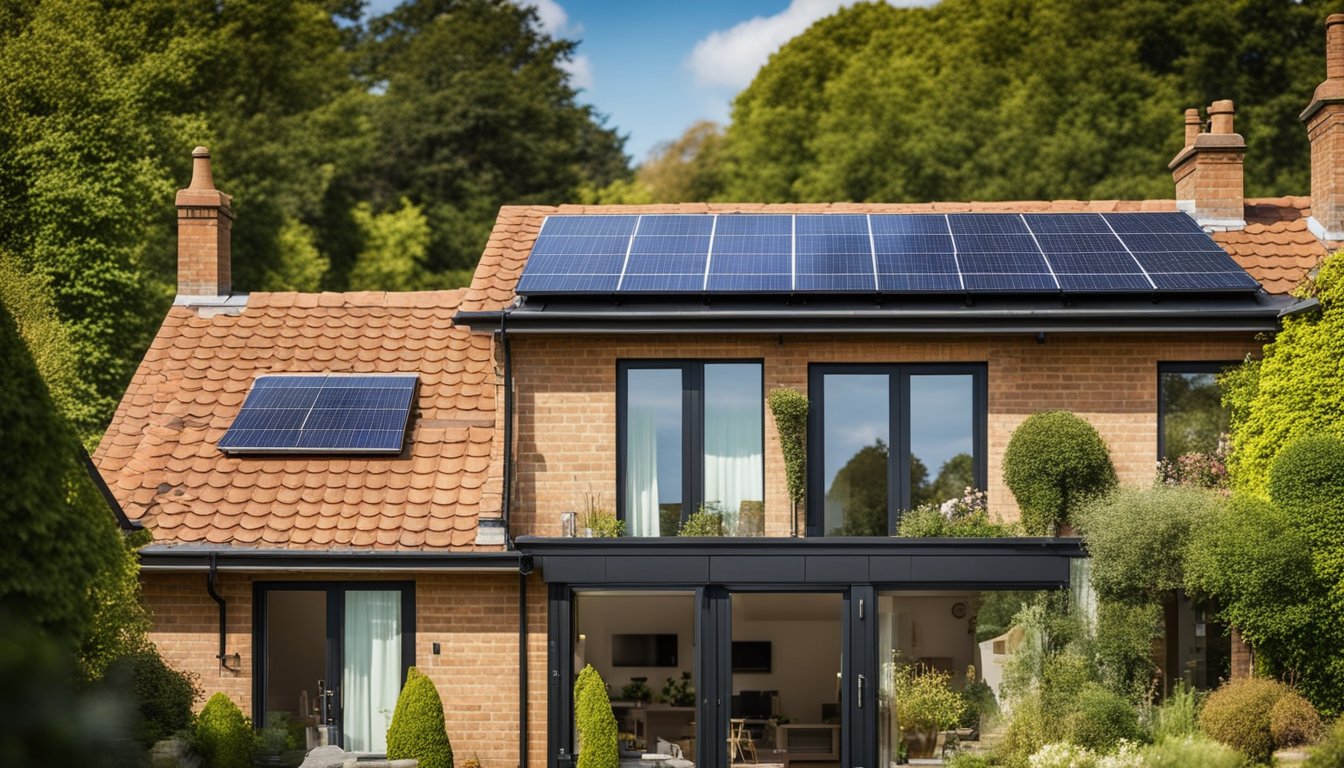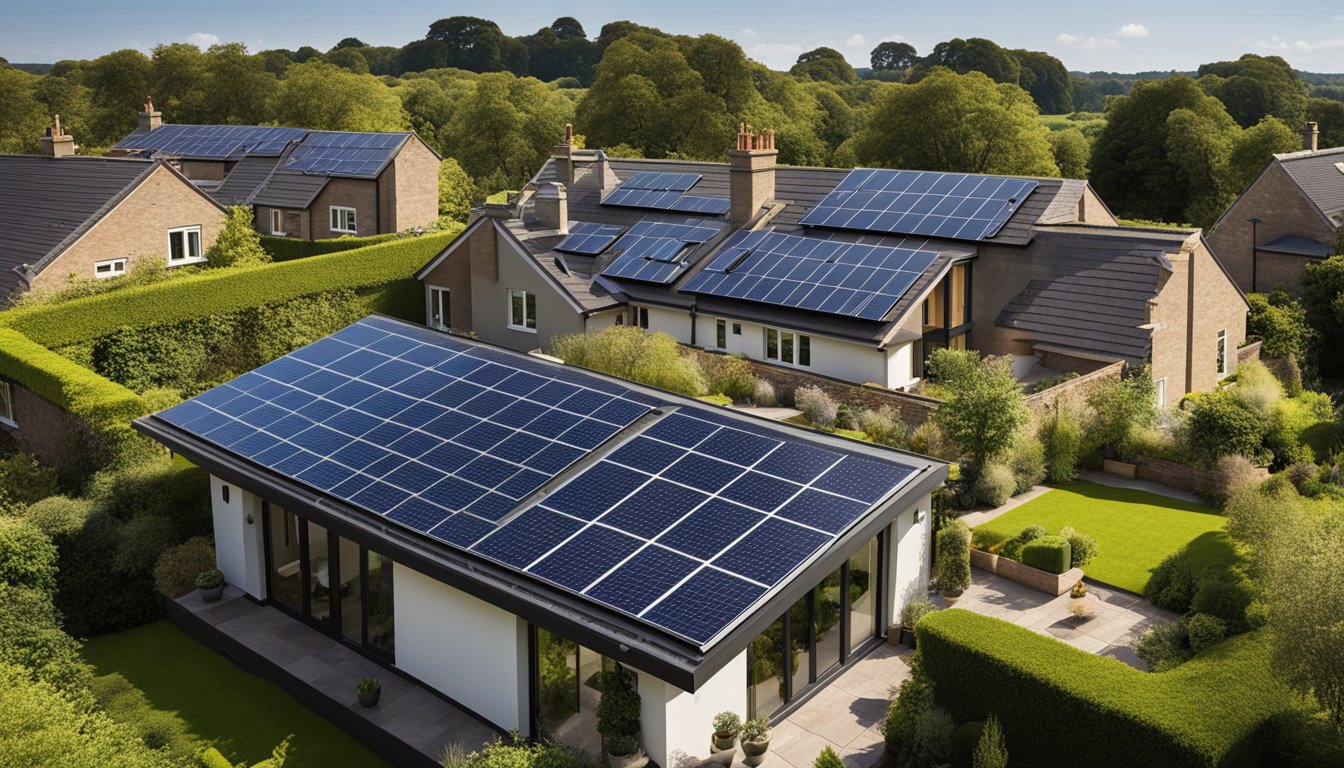Late updated: 07 Feb 2025 08:02
Written by: Oliver Bennett
Choosing Sustainable Roofing Options for UK Homes: Eco-Friendly Choices Explained
Choosing sustainable roofing options is critical for homeowners in the UK who want to lessen their environmental impact while enhancing their home's energy efficiency. With the increasing demand for eco-friendly solutions, we can now choose from a variety of materials like recycled metal, green roofs, and cool roofs. These alternatives not only reduce our carbon footprint but also offer long-term savings on energy costs by improving insulation and reflecting solar heat.

As we adapt our homes to meet modern environmental standards, selecting the right roofing material plays a crucial role. Beyond aesthetics, the key lies in understanding how different materials perform and their durability over time. This consideration is especially pertinent given the British climate, where energy efficiency and weather resistance are essential.
Key Takeaways
- Sustainable materials improve energy efficiency and reduce carbon impact.
- Different roofing options offer various benefits suited to UK climates.
- Practical choices account for environment, cost, and material longevity.
Understanding Sustainable Roofing Materials

Selecting sustainable roofing materials is critical for enhancing the energy efficiency and environmental sustainability of UK homes. We explore the various options and their benefits, so you can make an informed decision.
Types of Sustainable Roofing Materials
A variety of roofing materials offer sustainability and energy efficiency. Metal roofing is a popular choice due to its durability and recyclability. It can also reflect heat, aiding in energy conservation.
Green roofs have become increasingly favoured for their ability to reduce greenhouse gas emissions and improve air quality. These living roofs provide habitat for urban wildlife and mitigate the urban heat island effect.
Traditional options like clay and concrete tiles are sustainable due to their longevity. Solar tiles provide renewable energy, integrating technology with environmental goals. This combination reduces the carbon footprint of homes.
Performance and Durability
Performance is essential in assessing roofing materials. Metal roofs stand out for their durability, often lasting over 50 years with minimal maintenance. Their ability to withstand harsh weather conditions makes them suitable for UK climates.
Green roofs provide excellent thermal performance, insulating homes against temperature fluctuations. This improves energy efficiency and can lead to reduced heating and cooling costs.
Clay and concrete tiles, known for their strength, also ensure long-lasting performance. Solar tiles combine durability with technological innovation, offering both electricity generation and reliable roofing solutions. Choosing the right material impacts not only longevity but the home's ongoing energy efficiency.
Environmental Benefits
Environmental benefits are crucial when considering roofing materials. Using recycled materials contributes to waste reduction and resource conservation.
Green roofs enhance biodiversity by creating habitats for birds and insects. This supports urban biodiversity and prevents the loss of natural areas in city landscapes. They also help absorb rainwater, lowering the risk of flooding.
Embracing materials like solar tiles aids in reducing dependency on non-renewable energy and cuts down on greenhouse gas emissions. By opting for sustainable options, we not only make environmentally conscious choices but also support urban resilience and sustainable living practices.
Practical Considerations in Selecting A Roof
When selecting a sustainable roofing option for UK homes, various factors warrant attention. These factors range from cost and energy savings to the impact of local climate and property value, alongside available government incentives and grants.
Cost and Energy Savings
Understanding the financial aspects of roofing installation is crucial. Investing in sustainable roofing materials may involve a higher initial cost but can lead to long-term savings. Options like solar roofing and metal roofs offer significant energy savings due to their insulation and reflective properties. These roofs help minimise heat absorption, reducing the need for air conditioning.
Energy efficiency directly translates to lower utility bills, providing ongoing financial benefits. The cost savings achieved through energy reduction can make up for the initial investment over time. We must weigh the balance between upfront costs and long-term savings to determine the most cost-effective choice.
Local Climate and Property Value
The local climate plays a pivotal role in selecting appropriate roofing materials. In regions with high rainfall, choosing materials that offer excellent thermal performance and water resistance is imperative. Options like green roofs contribute to energy savings by enhancing insulation properties suitable for various climates.
A well-chosen roof can positively impact property value. Eco-friendly roofing solutions appeal to environmentally-conscious buyers, potentially increasing resale value. Homes equipped with sustainable roofs are often seen as more desirable, aligning with the growing demand for energy efficiency and eco-conscious living.
Government Incentives and Grants
There are government initiatives aimed at promoting renewable energy and energy independence. Various incentives and grants cater to homeowners investing in sustainable technologies, including solar roofing systems. These financial aids can substantially offset installation costs.
By leveraging available government programs, we support our pursuit of eco-friendly roofing solutions. It's vital to research and apply for any relevant schemes, ensuring we maximise potential savings. These grants not only make sustainable options more accessible but also encourage broader adoption of green technologies in roofing.
Frequently Asked Questions

Choosing sustainable roofing involves understanding different materials, their environmental impacts, and innovations such as green roofs and solar panels. In this section, we address specific questions to help guide these choices.
What materials are recommended for environmentally friendly roofing in the United Kingdom?
Environmentally friendly roofing materials in the UK include EPDM rubber and metal roofs, known for their durability and recyclability. Green roofs, which incorporate vegetation, and recycled shingles also offer sustainable options by reducing waste and improving insulation.
How does green roofing contribute to sustainability in UK homes?
Green roofing benefits include efficient stormwater management, enhanced urban biodiversity, and reduced urban heat. These roofs provide a natural layer of insulation, mitigating heat loss. For urban environments, they help transform grey spaces into vibrant green areas.
What are the benefits of using recycled roofing materials in the UK?
Recycled roofing materials reduce landfill waste and generate less environmental impact during production. These materials often involve repurposed shingles and metals, offering a responsible and cost-effective option. The use of recycled products also supports a circular economy, an approach gaining traction globally.
Can you outline the lifecycle impacts of different roofing materials used in the UK?
Each roofing material has specific lifecycle impacts. For instance, traditional asphalt shingles require more frequent replacement compared to metal or rubber, increasing their overall environmental footprint. Meanwhile, green roofs can extend the lifecycle of the underlying roof structure by offering protection from weathering.
What are the key considerations when installing solar panels on a roof in the UK?
Key considerations for solar panels include the roof's orientation, angle, and structural integrity to support the panels. Maximising sun exposure is vital, ideally with south-facing panels. We must also consider potential planning permissions and local regulations regarding installations.
How does roof insulation play a role in the energy efficiency of UK homes?
Effective roof insulation retains heat during winter months and keeps homes cool in summer. Materials like sheep's wool or recycled cellulose provide good thermal resistance. Well-insulated roofs reduce energy consumption, translating to lower heating bills and a decreased carbon footprint.
